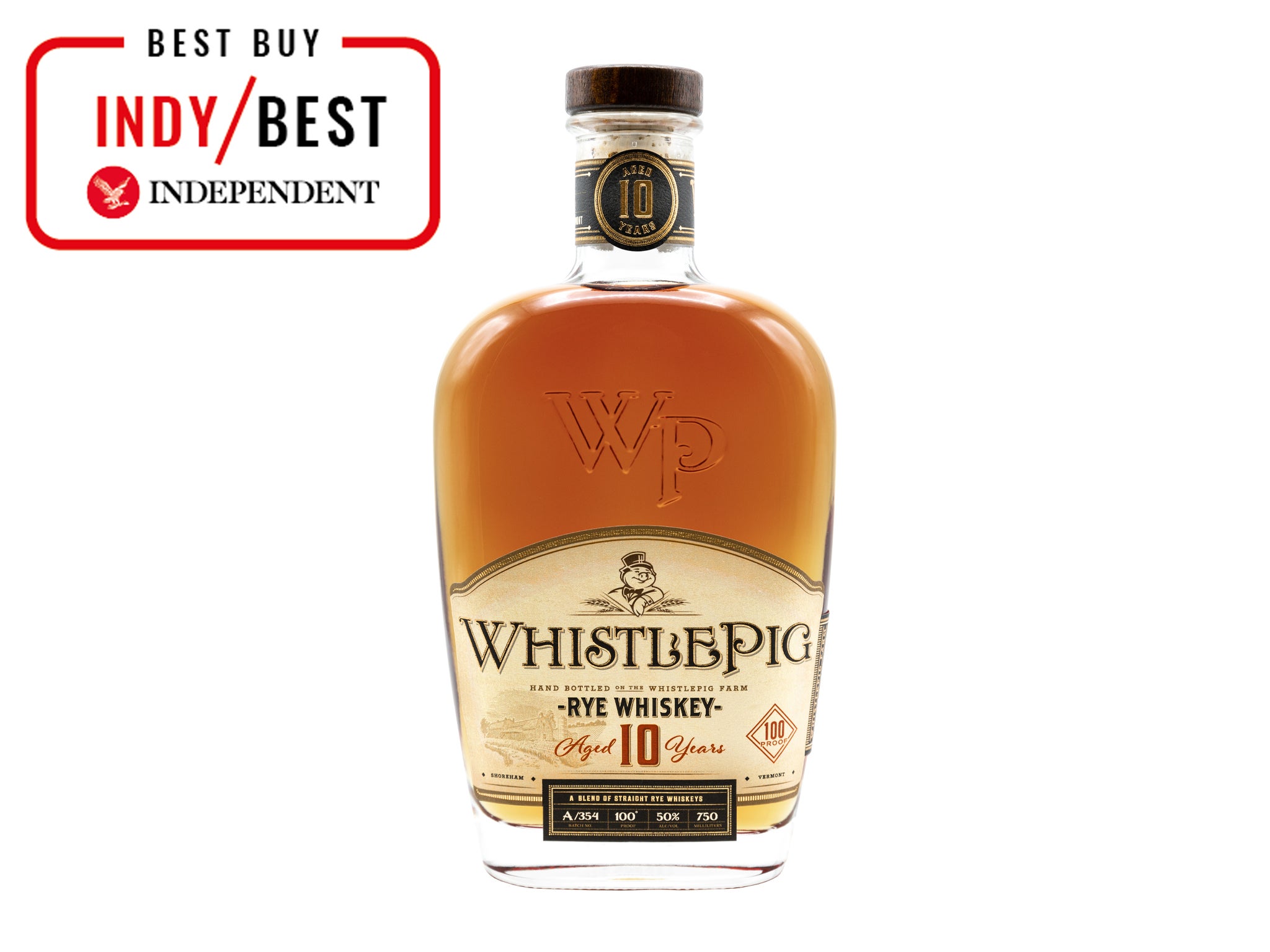
The Independent's journalism is supported by our readers. When you purchase through links on our site, we may earn commission. Why trust us?
World Whisky Day 2022: 14 best rye whiskies to taste right now
From bulleit to straight, rye is experiencing a resurgence – and for good reason
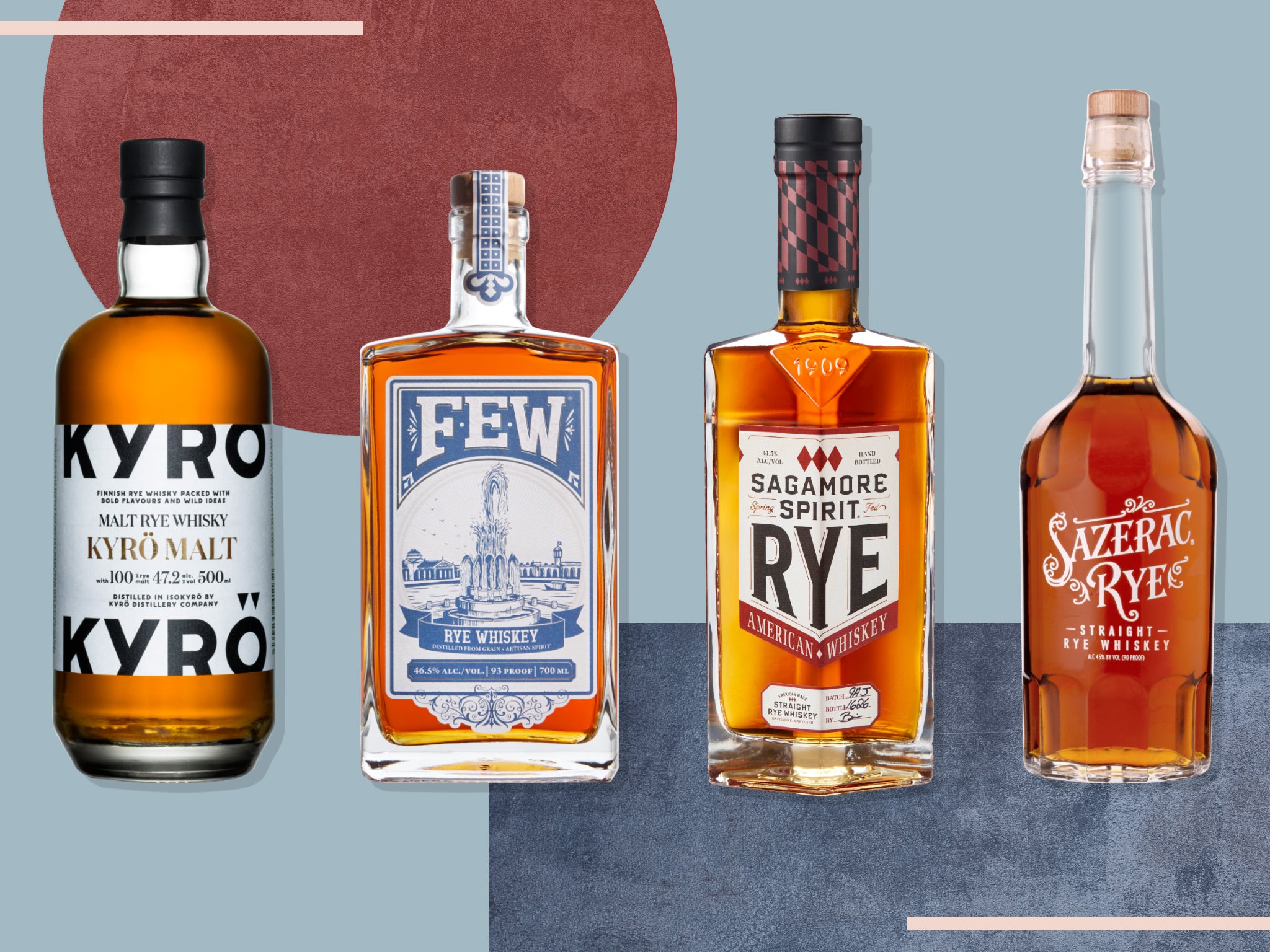
Bourbon may be the UK’s most popular dram, but its cousin rye is catching up. Today, two main styles of rye whiskey are available: American and Canadian, which can be labelled as rye for historical reasons, but needn’t contain any rye in its creation. To be labelled American rye whiskey, the spirit needs to be produced from a mash bill (recipe of grains which provide the sugars for fermentation) of over 51 per cent rye.
Considered a close cousin to bourbon, which must contain at least 51 per cent corn, rye whiskey is typically spicier and bolder, with drawn-out finishes and a fairly savoury character.
Dating back to the 18th century, rye was particularly popular in Pennsylvania and Maryland during the 1700s and 1800s, brought to the United States by Irish and Scottish immigrants. Though Scotch and Irish whiskies were originally the settlers’ preference, they soon found rye to be a grain far more suited to the local climate, tolerant of acidic soil and cool weather.
By 1808, rye whiskey was so popular that it was being produced in the county of Allegheny, Pennsylvania, to supply everybody in the country with half a barrel. Yet with the introduction of Prohibition, rye whiskey’s popularity waned rapidly, with the category’s market almost entirely destroyed. Canadian “rye whiskey” became far more common, though the quality was considered inferior at the time, garnering rye whiskey a less than favourable reputation.
Corn was also heavily subsidised in the US during the First and Second World Wars, resulting in farmers favouring corn over rye, which had become fairly redundant. Bourbon, in turn, became the American whiskey of choice, and has remained popular since.
Read more:
Over the past decade, rye has seen a renewed increase in popularity, however, predominantly led by bartenders striving to produce authentic Manhattan or Sazerac cocktails. Of course, rye won’t outpace bourbon or Scotch in the near future, a great number of brands have begun to experiment, introducing new rye expressions.
While most of the world’s rye whiskey is produced in the United States, primarily in Kentucky and Indiana, a number of other states are producing exceptional ryes, as well as countries such as Finland, Denmark, and England, bound by fewer rules. These are the best readily available options, for the rye whiskey-curious to seasoned enthusiasts.
WhistlePig 10 year old whiskey

- ABV: 50%
- Size: 70cl
A relative newcomer to the world of rye whiskey, WhistlePig was founded in 2007. Originally sourcing whiskey from Canada and ageing the liquid at its Vermont distillery, WhistlePig has since become North America’s most decorated rye whiskey brand. And for good reason. Operating from a 500-acre farm, where its farm-to-bottle spirits are produced, the distillery is responsible for excellent whiskeys such as their WhistlePig Estate Oak Rye aged for 15 years, finished in Vermont Estate Oak, which is remarkable albeit at the higher end of the price scale (circa £245).
The WhistlePig 10 year old whiskey is an essential for any drinks cabinet, however. Made with 100 per cent rye, the 10-year-old expression harbours a complex flavour profile with subtle honey and vanilla joining burnt orange, smoke, and some tropical fruit savours. The finish is rampant with pine, plus some peppermint and plenty of mouth-coating rye character with lingering spiciness. Simply outstanding.
Catoctin Creek roundstone rye 80 proof
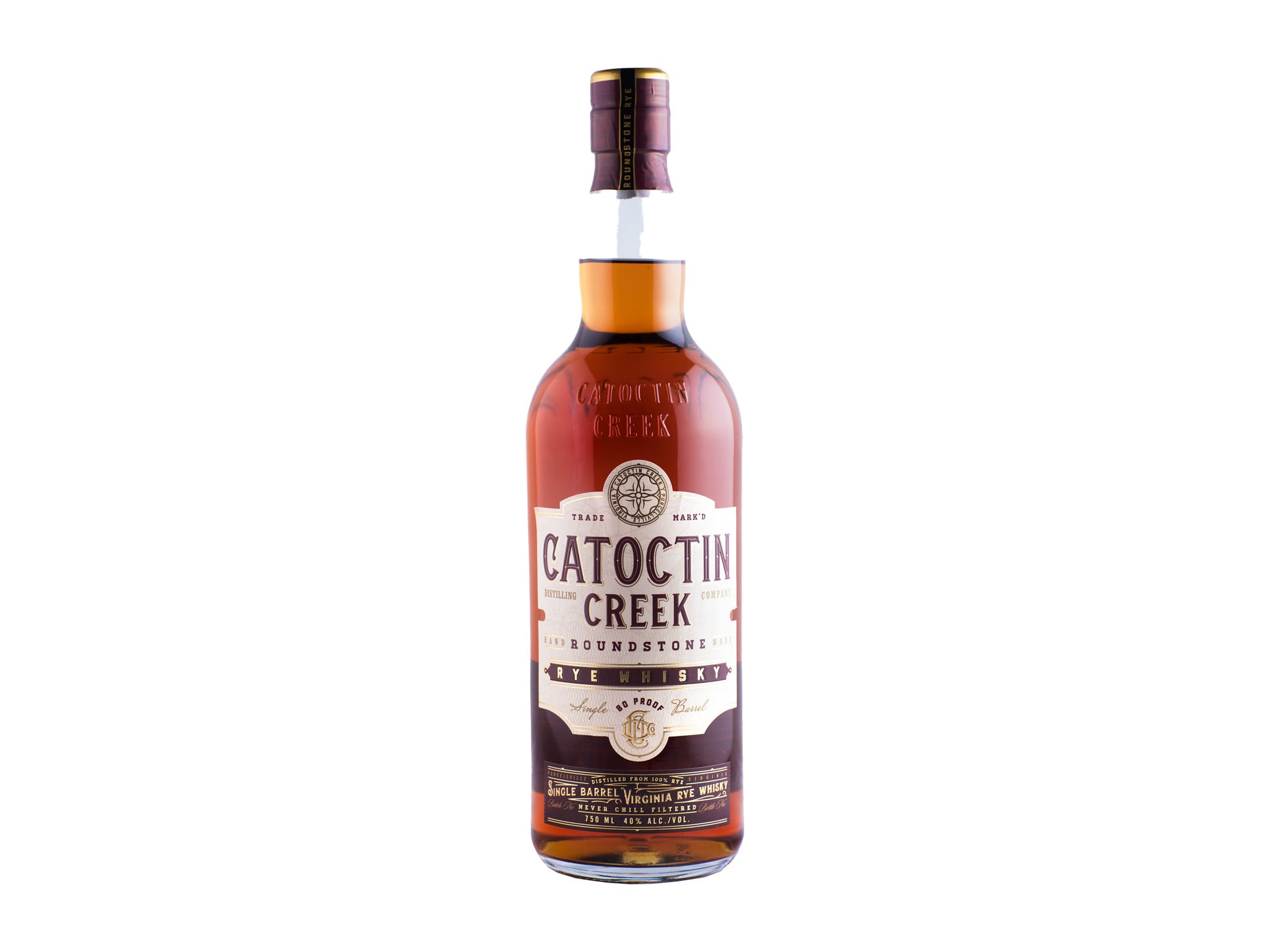
- ABV: 40%
- Size: 70cl
Established in 2009, Catoctin Creek was Virginia’s first legal distillery to open since 1933, when Prohibition was lifted. Owned by husband and wife Scott and Becky Harris, the distillery produces a number of spirits, as well as their Roundstone Rye, with three expressions now available in the UK. Striving to embody the essence of its home in Loudoun County, in the north of Virginia, the whiskey is produced using a small-scale, pre-Prohibition distillation method using home-sized pot stills and local Virginia grain (100 per cent rye).
Once aged in new charred Virginia oak barrels, the natural Virginia spring water is used to proof the whiskey. All three roundstone rye expressions available in the UK are worth sampling, but their most popular, roundstone rye 80 Proof, is especially brilliant for its price bracket. With woodiness and notes of caramel, toffee, and lemon, the charred white oak imparts plenty of smoothness and a true grain character of traditional American rye whiskey.
Stauning rye whisky
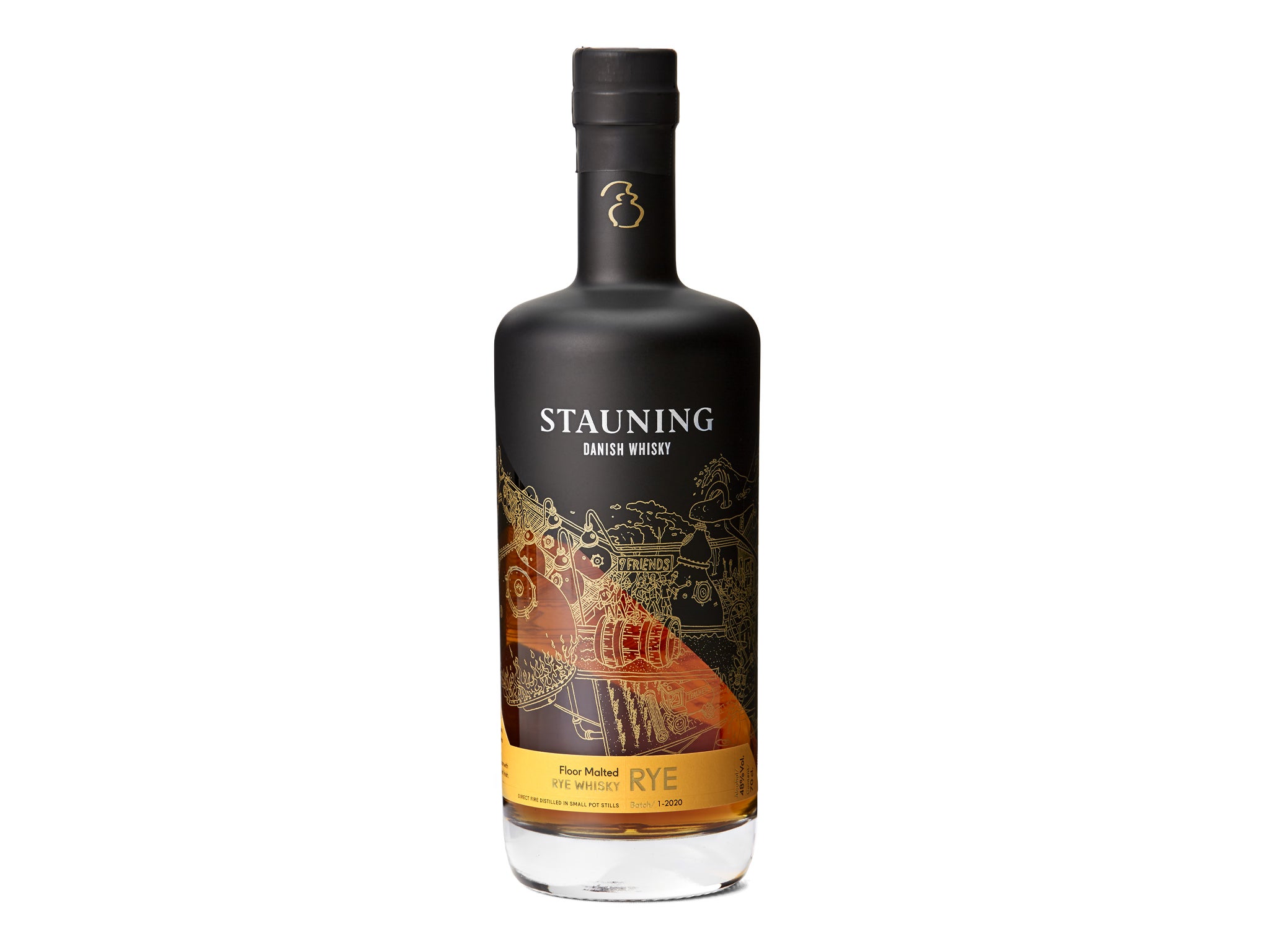
- ABV: 48%
- Size: 70cl
A European rye whisky of note, Stauning whisky is produced in Jutland, Denmark. Recently introduced to the UK market for the first time since launching in 2005, Stauning focuses on reviving and innovating traditional methods lost to industrialisation, while reflecting the distillery’s Nordic heritage wherever possible. All of the brand’s expressions are made using local grain, floor-malted at the distillery. Combining malted grain and pot distillation, Stauning’s rye whisky is actually designed to appeal to drinkers who wouldn’t usually consider rye.
As a result, the classic rye spiciness is there, alongside some cereal notes, but it’s slightly sweeter than typical, with additional fruity notes particularly prominent on the smooth finish. For something a little different, it’s an uncommon rye certainly worth tasting, as well as providing the foundations for a great Manhattan cocktail.
Minor Case rye whiskey
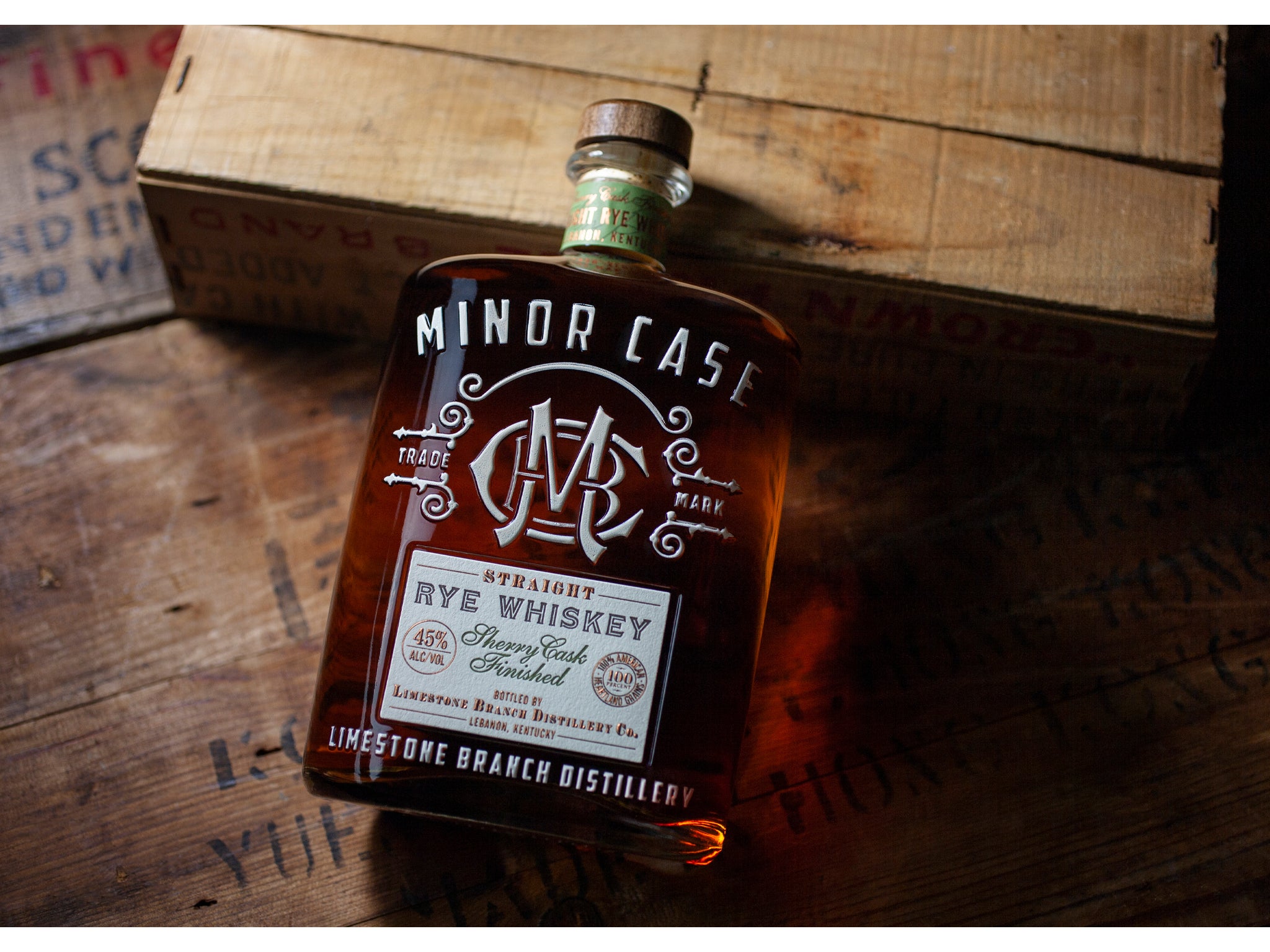
- ABV: 45%
- Size: 70cl
An excellent distiller, Minor Case was making whiskey long before prohibition started, and their rye whiskey is an authentic reproduction of his original, pre-Prohibition recipe. With a “Kentucky-style” mash bill of 51 per cent rye, 45 per cent corn, and four per cent malted barley, it’s finished in cream sherry casks for eight months.
A rarity for rye whiskeys, the sherry cask finish imparts a balancing sweetness to the classically spicy rye, with notes of baking spices joined by honeyed cereal, cedar, and rich dried fruit notes. Overall, it’s a unique young rye whiskey with unexpected smoothness and complexity, particularly suited to Manhattans made with white vermouth instead of sweet vermouth.
Sazerac rye whiskey
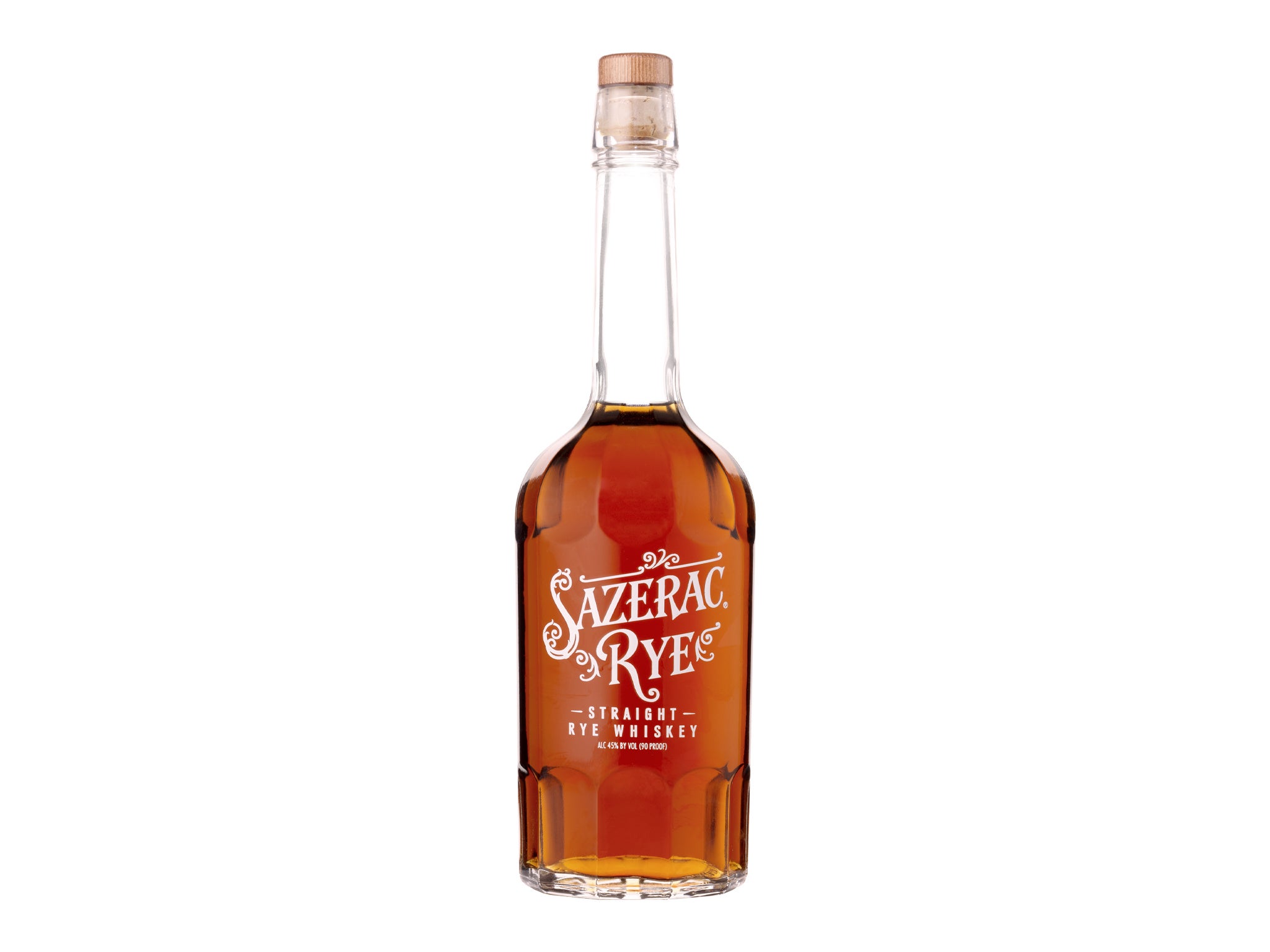
- ABV: 45%
- Size: 70cl
One of the biggest spirits companies in America, the Sazerac Company was established during the mid 1800s after founder Thomas H. Handy purchased the Sazerac coffee house in New Orleans. Considered “the official cocktail of New Orleans”, the Sazerac cocktail is believed to be one of America’s first cocktails, typically based with rye whiskey (although originally made with Cognac), bitters, sugar, and absinthe, which is used to rinse the glass.
Produced at the Buffalo Trace distillery in Frankfort, Kentucky, Sazerac rye whiskey has subtle stone fruit aromas joined by sweet vanilla, baking spices, and candied orange peel which continues on the palate alongside some toffee, maple, dried fruit, and walnut alongside black pepper and dry oak, complete with an oily, spicy finish. A perfect base for its namesake cocktail, with a lemon twist complementing the base spirit’s citrus notes.
Kyro single malt rye whisky
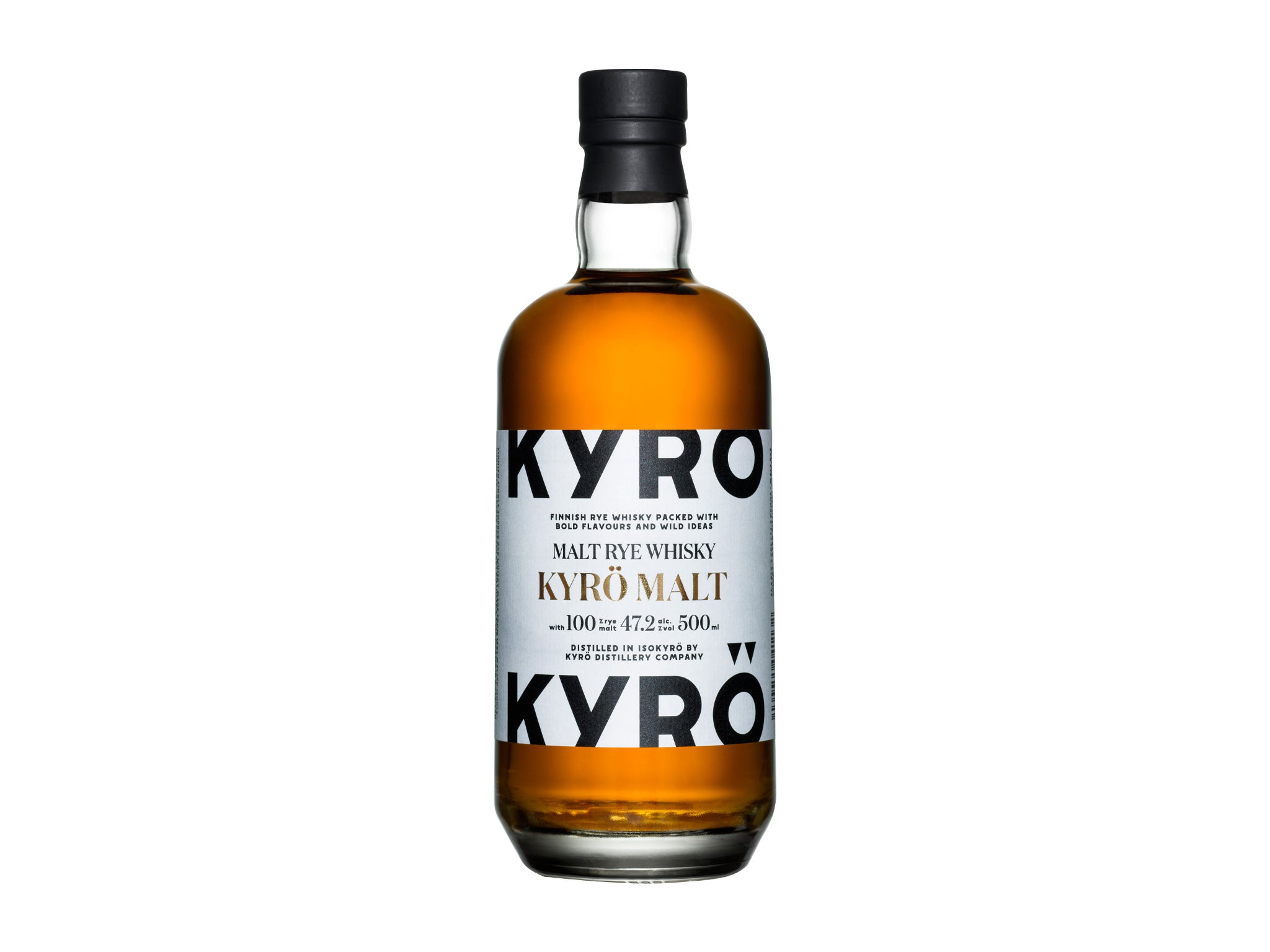
- ABV: 47.2%
- Size: 70cl
“In rye we trust”, is the motto of Finnish distillery Kyro. Wondering why no rye whiskey was produced in Finland – considering the nation consumes six times more rye than the global average – the distillery was set up by a group of friends intent on crafting the first Finnish single batch rye whiskey. Operating from an old dairy in Isokyro, Kyro also produces an array of gins, plus cream liqueur and experimental small batch expressions.
Made with 100 per cent Finnish whole grain rye, their Kyro Malt rye whiskey is double pot-distilled and aged in new American white oak casks for at least three years. Honey dominates on the nose alongside some peppery rye, baking spices, and a whisper of chocolate. Rye bread notes prevail on the palate, joined by some orchard fruits which lend sweetness, bitter orange marmalade, and further vanilla dominating the smooth finish.
Sagamore Spirit signature rye
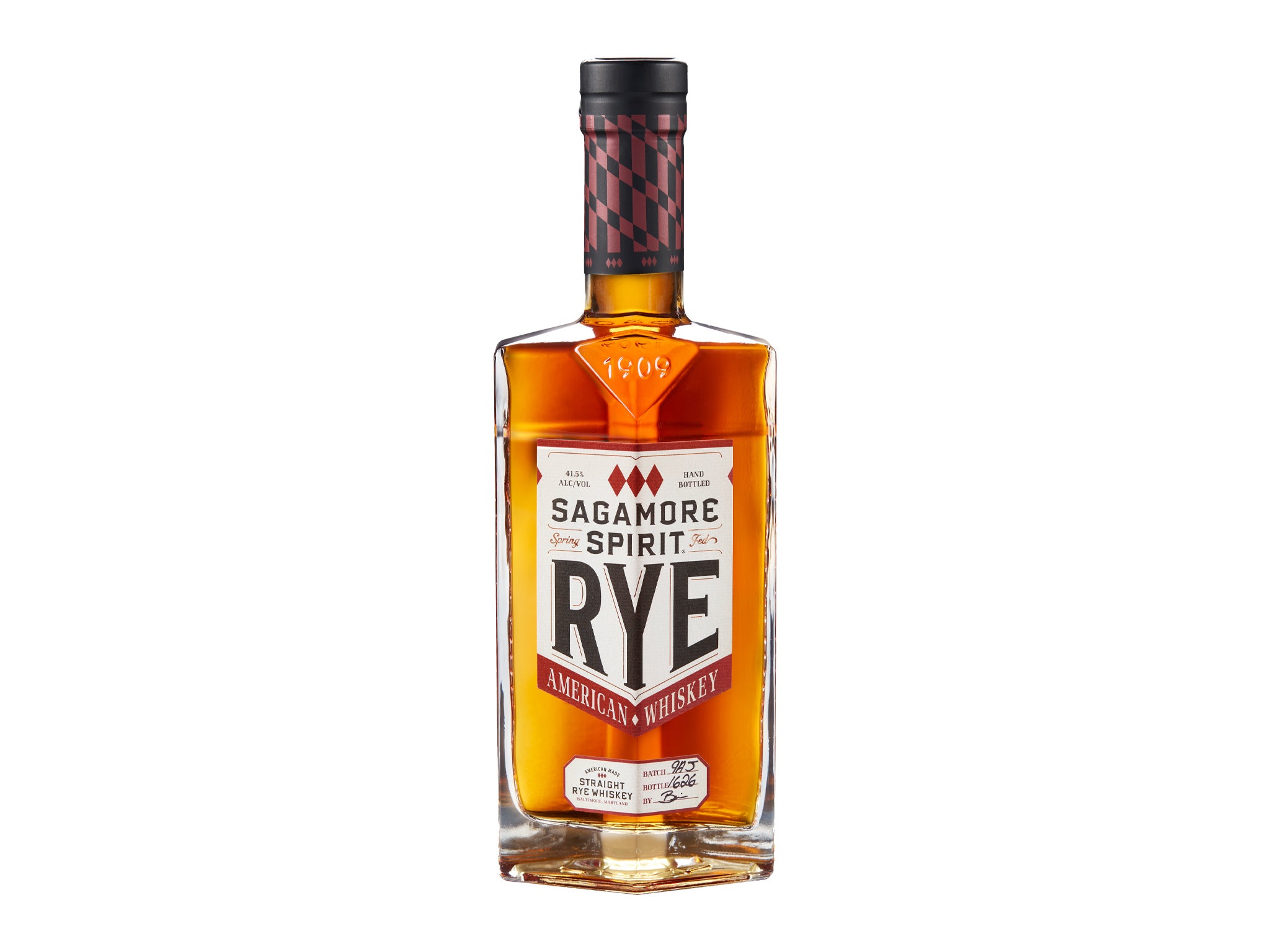
- ABV: 41.5%
- Size: 70cl
Historically, Maryland was a centre of rye whiskey production before Prohibition, with 44 distilleries operating within the state. While 14.1 million gallons of rye whiskey were produced in 1936, most of the distilleries began to focus on ethanol production during the Second World War, and few returned to producing rye. With its distillery on the banks of the Patapsco River in Maryland, Sagamore Spirits is committed to celebrating the history of Maryland’s great distillers, hoping to inspire a global passion for their rye whiskey.
Full-bodied, yet sweeter, smoother, and less spicy than typical, Sagamore Spirit’s straight rye is a Maryland-style expression, although it’s not distilled in Maryland at present. Instead, it’s produced in Indiana and bottled by Sagamore Spirit. Interestingly, two different mash bills (“high rye” and “low rye”) are blended and diluted to proof with limestone filtered spring water. The resulting liquid has slight sweetness with caramel, dried stone fruit, and some pepperiness that lingers on the finish with a touch of honeyed sweetness.
Adnams rye malt whisky
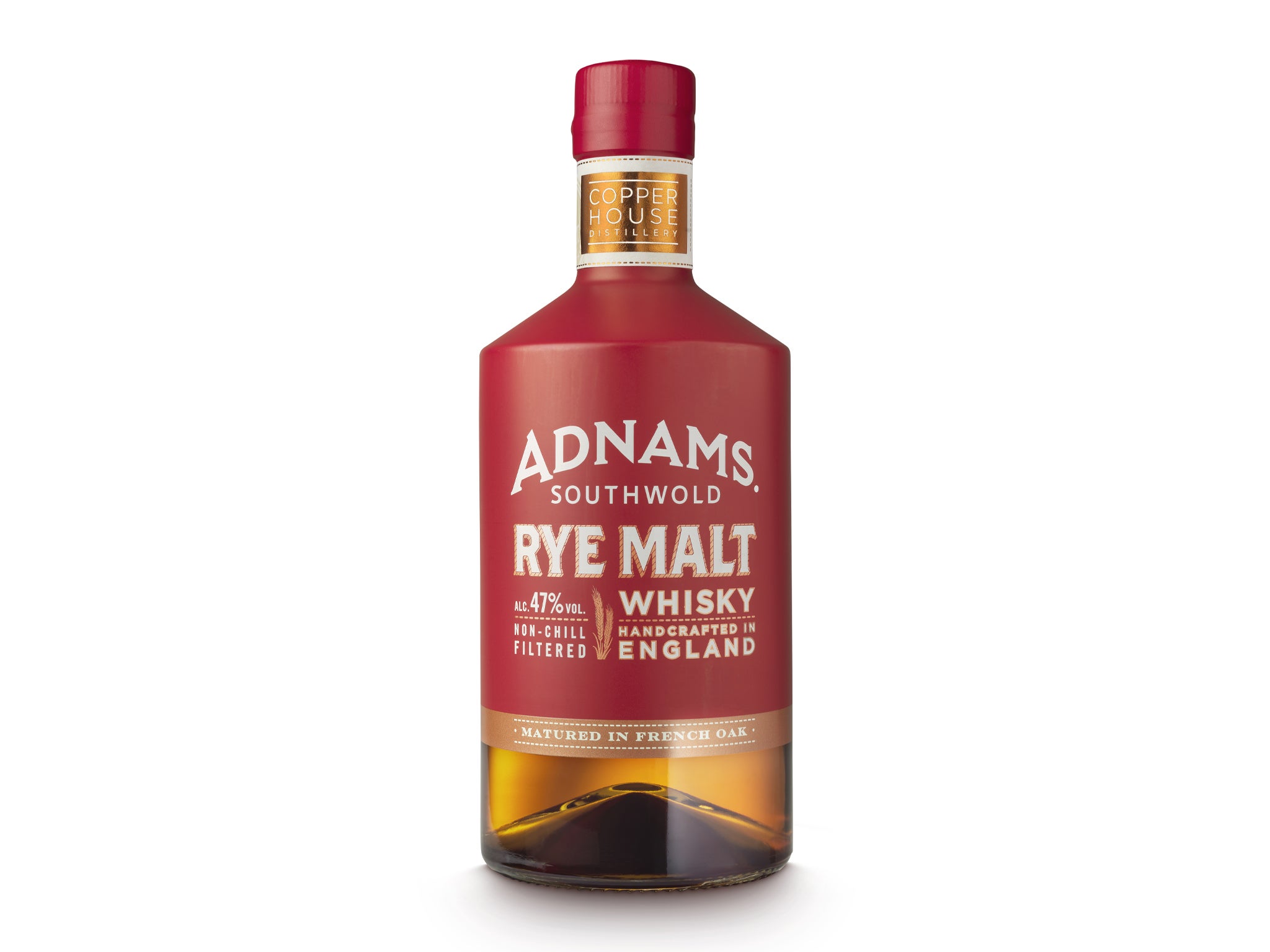
- ABV: 47%
- Size: 70cl
Category winner for “best English rye” at the World Whiskies Awards 2021, Adnams rye malt is made from a blend of 75 per cent rye and 25 per cent barley. For its rye malt, the sustainable British brewery and distillery uses rye grown by John Adnams at his farm in Reydon, close to the business’ coastal home in Southwold, Suffolk. Rye has been grown in Reydon for centuries and the village’s name is derived from the Old English words; “Rey” meaning rye, and “Don” meaning hill.
Here, the rye gives the whisky a great depth of character, aged for at least five years in brand new French oak Bordeaux casks. Bold oaky vanilla aromas are joined by some fudge and black peppercorn, while the palate is rich and slightly spicy, with spice continuing on the long finish. Best served neat, with a splash of water, or as an alternative to bourbon in Old Fashioned cocktails, with a few dashes of angostura bitters and brown sugar.
FEW straight rye whiskey
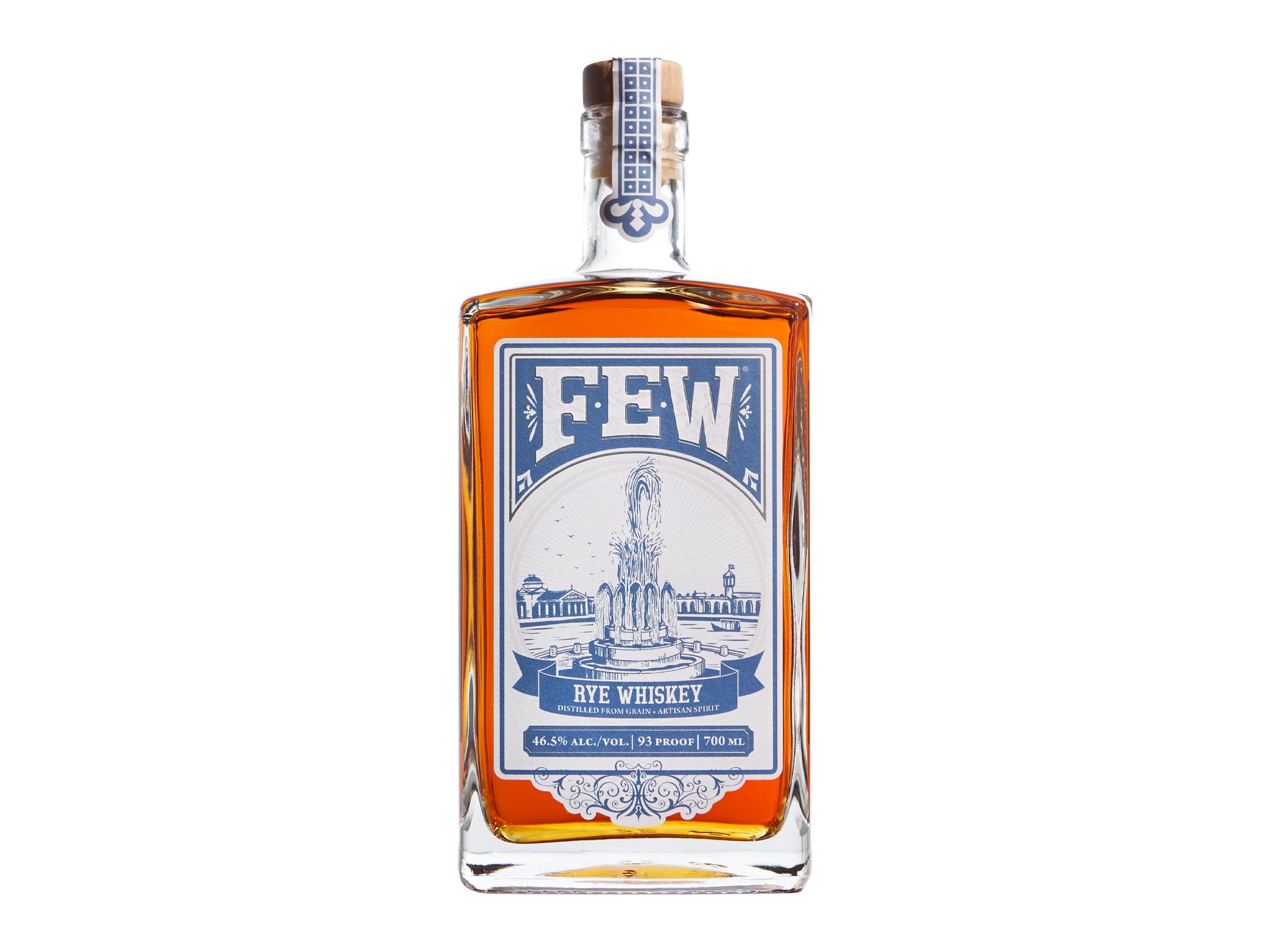
- ABV: 46.5%
- Size: 70cl
Known as “the seat of Prohibition” and the established headquarters of the temperance movement, the Chicago suburb of Evanston continued to ban alcohol until 1972. Today, the city is home to a number of distilleries, including FEW Spirits, which focuses on craft distilled whiskey and gin. Aged in air-dried oak barrels, the distillery’s straight rye whiskey has prominent orchard fruit aromas of apple and sweet pear drops, which continue on the palate alongside some honeyed sweetness, orange, vanilla, and spiciness.
A well-balanced American whiskey with a fruity flavour profile, the texture is more buttery than typical of its style, with an overall character that may also appeal to bourbon fans. FEW straight rye isn’t necessarily the best rye whiskey at its price point, but it’s certainly worth tasting, given the opportunity.
That Boutique-y Rye Company empire rye
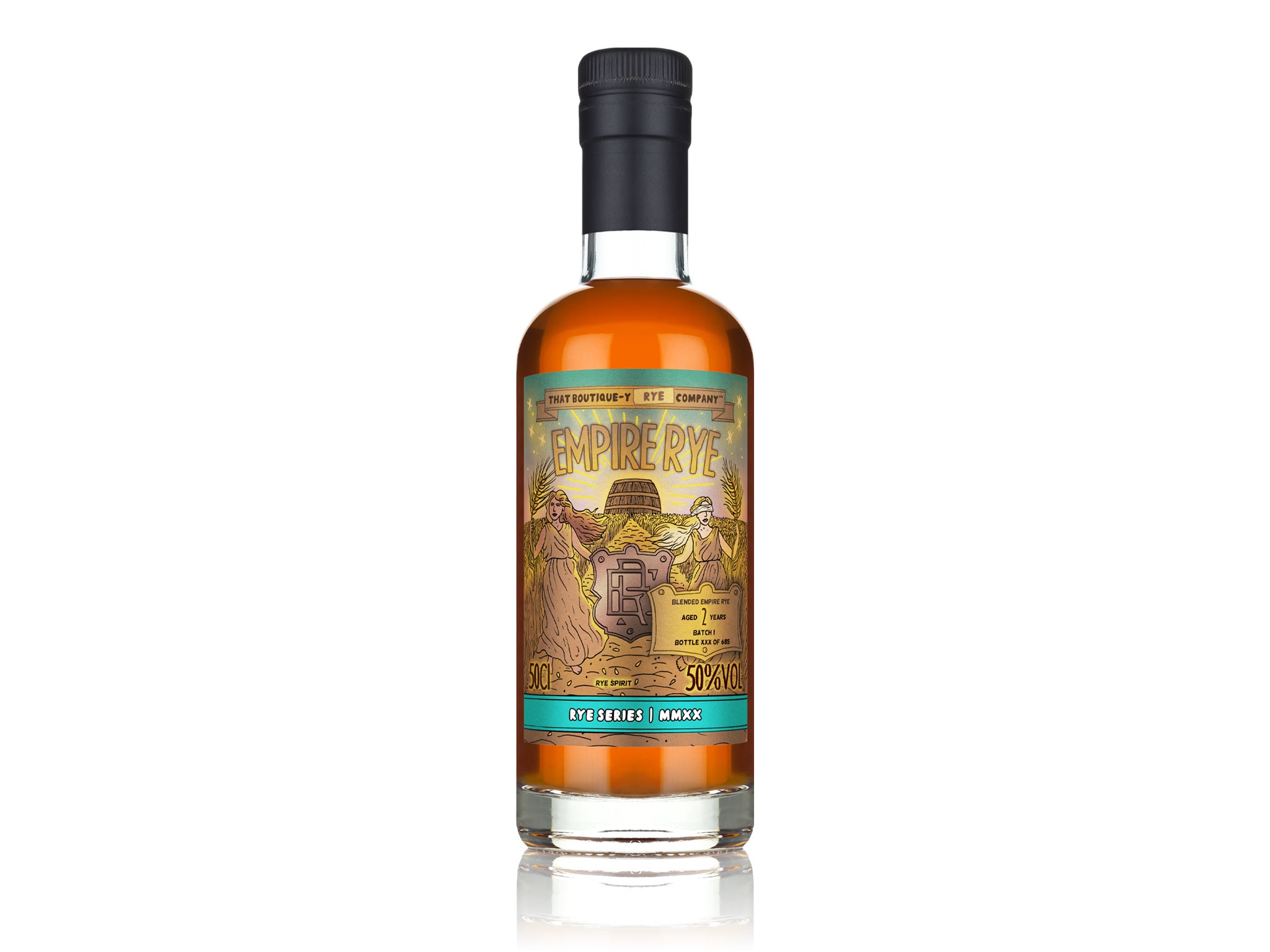
- ABV: 50%
- Size: 50cl
An independent whisky bottler, That Boutique-y Whisky Company is owned by Atom Brands, with the founders having travelled around the world selecting single casks to create their own blends, which are then bottled and sold under various guises. From their rye series, the first batch of empire rye is a blend of nine rye whiskeys, all from New York State.
Back in 2015, a group of New York distillers created a consortium to establish a whiskey style for the state they call home, resulting in empire rye – a homage to New York’s pre-Prohibition rye history, and a testament to the skills of its modern distillers. A first of its kind, the empire rye is aged for just two years, but the depth of flavour suggests otherwise, with a palate of stone fruits, woody vanilla, popcorn, and a snap of cumin, with creamy mouthfeel and a menthol-rich finish.
Ezra Brooks straight rye whiskey
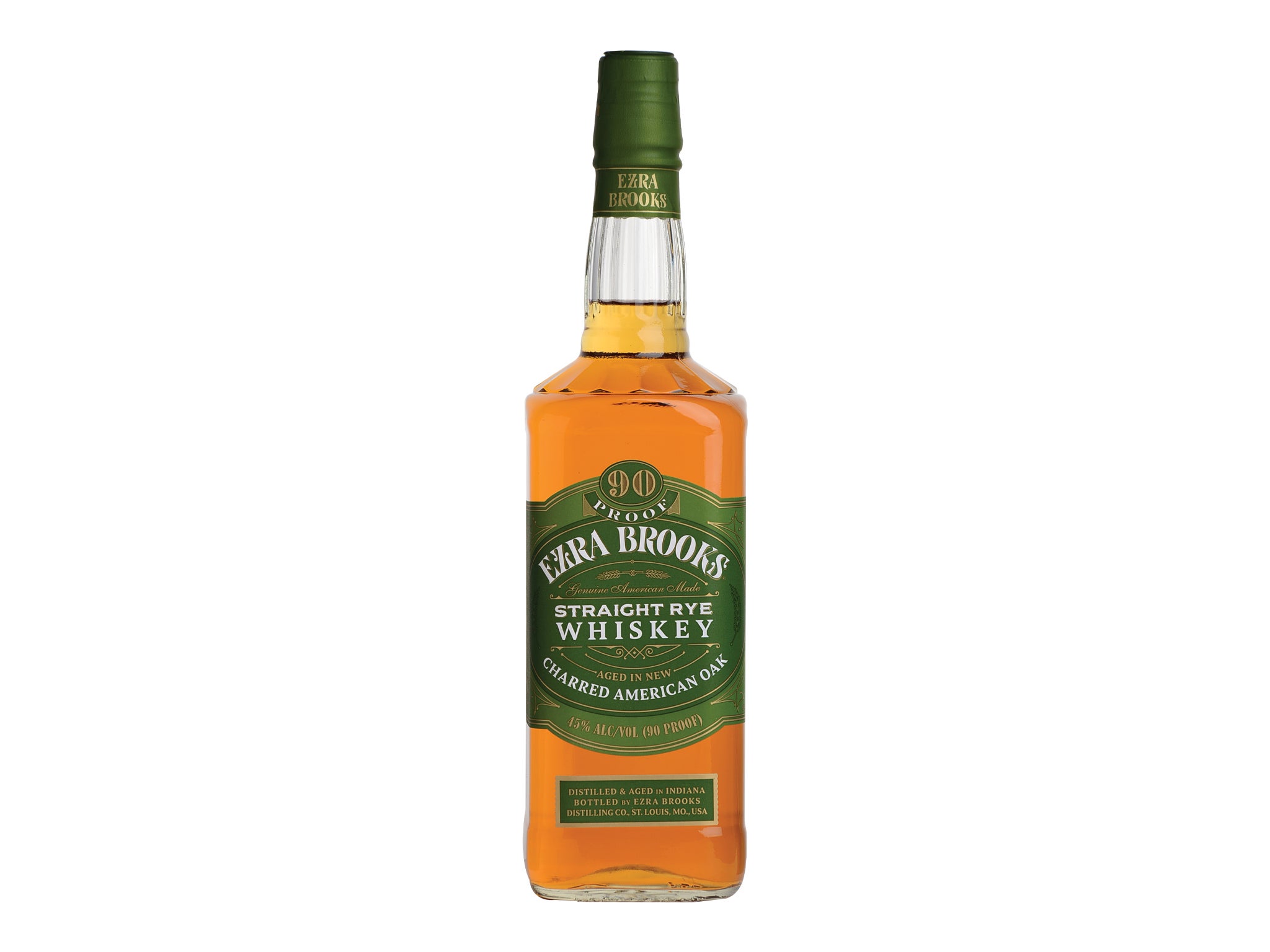
- ABV: 45%
- Size: 70cl
Using rye whiskey sourced from MGP, a distillery in Lawrenceburg, Indiana, which produces spirits for private label sale, Ezra Brooks straight rye whiskey is distilled to 45 per cent ABV, with a mash bill of 51 per cent rye, 45 per cent corn, and four per cent malt. That high corn content lends the whiskey some trademark bourbon characteristics, aged for two years and charcoal filtered for smoothness. With notes of chocolate, leather, vanilla and spicy grains, some oak sweetness adds balance alongside a prominent menthol note, adding a not unpleasant medicinal edge to the overall palate and medium-long finish.
The medicinal quality won’t be for everybody, but it’s a solid entry level rye whiskey (especially when considering its price point), good when sipped over ice, but even better as a base for classic cocktails. The menthol, eucalyptus savour is especially suited to a whiskey sour with plenty of lemon and sugar.
Wild Turkey straight rye

- ABV: 40.5%
- Size: 70cl
For decades, Wild Turkey produced just one rye whiskey, 101 rye. Yet due to the style’s increase in popularity, the Kentucky distillery needed to stretch its stocks as far as possible, eventually making their 101 rye available on a limited distribution basis and introducing what’s now known as Wild Turkey straight rye. With a “barely-legal” recipe, containing just 51 per cent rye in its mash bill, the straight rye is bottled at 81 proof, without an age statement (though it’s likely to have been aged for four-to-five years).
Before ageing, the American oak barrels are given a heavy “alligator” char, for deeper flavour. As well as breaking down the wood’s hemicellulose to extract bold sweet flavours, the heavy char removes some of that woodiness synonymous with the spirit. As a result, the liquid has bold vanilla flavours (not unlike bourbon) alongside notes of honey, brown sugar, and some spiciness led by caraway seed. Wild Turkey straight rye isn’t one of the most complex expressions on the market, but it’s smoother than its price suggests, and is particularly well-suited for use in cocktails.
Bulleit Rye frontier whiskey
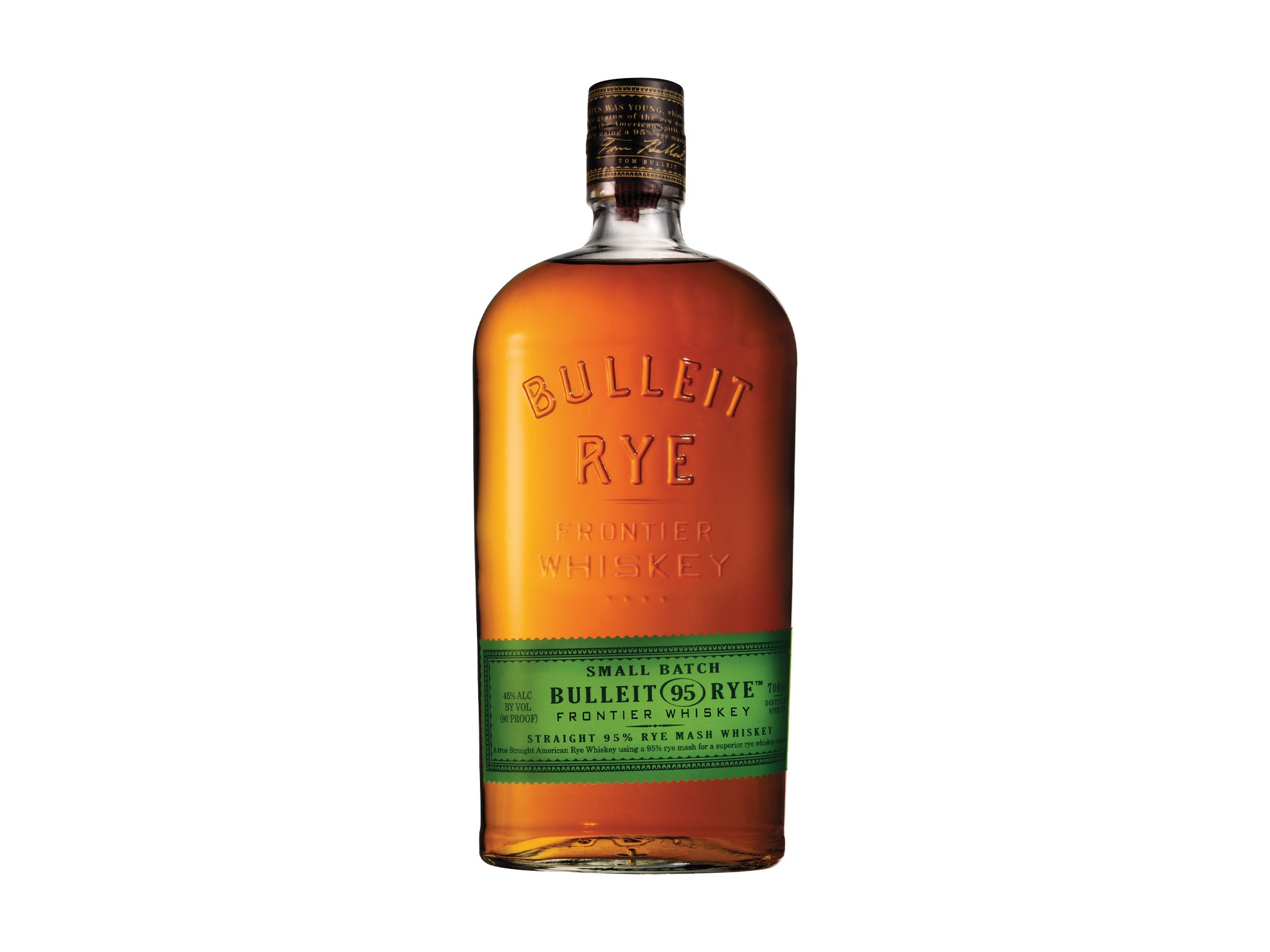
- ABV: 45%
- Size: 70cl
Particularly well known for its bourbon (which contains a fairly high amount of rye in its mash bill), Bulleit frontier whiskey’s rye expression is a relatively new addition to the brand’s portfolio. Introduced in 2011, Bulleit Rye is produced in small batches with a mash bill of 95 per cent rye and five per cent malted barley. Although the spirit has some caramel sweetness, it’s primarily due to the ageing process, while the palate also has a fair amount of woodiness, plus orchard fruits and fiery pepper that’s most prominent on the finish alongside a suggestion of chilli and cinnamon.
A sophisticated and well-balanced whiskey, Bulleit Rye lacks some complexity, yet it provides a good introduction to the world of rye whiskey, at an accessible price point – also readily available in various supermarkets. Enjoy over ice or as the base to classic cocktails in order to take the edge off.
The verdict: Rye whiskey
With the collection showcasing so many varying flavours and styles, from just one category, all of the whiskeys featured are recommended, for rye enthusiasts or those just hoping to learn more about the genre. WhistlePig’s small batch 10-year-old rye is a particular standout, however. Slightly less nuanced than the more expensive 12 and 15-year-old expressions, it’s an exceptional premium rye whiskey at its price point, and although slightly more expensive than most on the list, the product’s quality is worth every penny.
Honourable mentions also go to Michter’s US*1 Kentucky straight rye, an exemplary benchmark rye for under £50, and Catoctin Creek’s roundstone rye 80 proof – a remarkable whiskey for both sipping and making Manhattans.
Voucher codes
For the latest discounts on spirits and other alcohol deals, try the links below:
We tried drinks from across the country to find the best Scottish single malt whiskies
